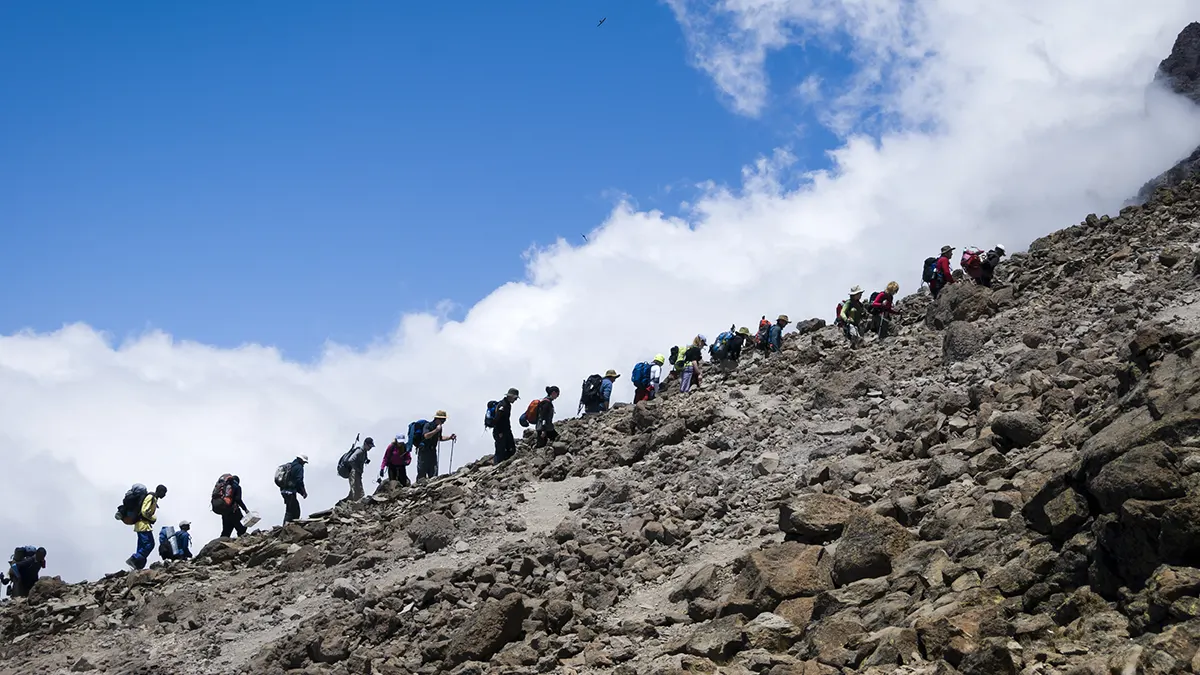If you are after a life-changing experience and the bragging rights that come with conquering Africa’s highest peak, Bensin Safaris Tanzania is an expert at combining your East African safari itinerary with the summit of Kilimanjaro. True adventurers prefer the less-traveled Lemosho and Rongai routes, which are more remote, scenic, and peaceful than other more popular routes. We are highly qualified operators with experienced porters and guides to offer an unforgettable, personalized adventure to the roof of Africa.
7 main Mount Kilimanjaro routes lead to the summit, Uhuru Peak, one of which starts on the Northern side of the mountain and the rest on the Southern side. The routes are Marangu, Machame, Lemosho, Shira, Rongai, Northern Circuit, and Umbwe.
Hiking Mount Kilimanjaro takes five to nine days to reach the Summit and then descend to the finishing point. The more days spent on Mount Kilimanjaro the more likely you will summit successfully because you will become more acclimated to the altitude.
All activity on Kilimanjaro is regulated by the Kilimanjaro National Park (KINAPA), which also oversees tour operators’ conduct and porters’ management. According to KINAPA regulations, a climbing group of two trekkers will have one guide, one assistant guide, six porters (three for each climber), and one cook.
Porters are responsible for carrying the trekker’s gear as well as items such as cooking supplies, tents, and water. It is customary to tip guides and porters and the amount is generally determined by the number of days on the mountain and the number of climbers in the group.
Generally, summit attempts start at midnight to allow trekkers to reach the rim of the crater in time to see the sunrise. An added advantage of setting out at night is that the ground tends to be frozen, ensuring an easier walk over the usually loose gravel. Depending on your route, the push to the summit can take anything from one to two hours.
It is generally a straightforward walk, though your route may require some scrambling (using your hands for balance and support) for short sections of fragmented rock.
“The greatest challenge travelers face when climbing Kilimanjaro is altitude sickness, which causes a third of climbers to turn back,” says Mr. Dickson, an experienced mountain guide with Benson Safaris Tanzania.
While Kilimanjaro is a non-technical climb, the extreme altitude, low temperatures, and occasional fierce winds mean all hikers must be physically fit, properly equipped, and well-acclimatized. The single biggest success factor on any Kilimanjaro trek is allowing yourself ample time to adjust to the elevation. All routes have rangers and rescue facilities to assist those affected by altitude sickness.
It is also possible to sleep overnight in the crater on most routes, meaning travelers can summit during the day and avoid the midnight rush. You will have time to explore the crater and the glaciers and can get back to the rim early the next day to see the sunrise. You may encounter snow on your 1-hour ascent to the summit of Uhuru peak where you will be officially certified and celebrated for successfully conquering the roof of Africa.
